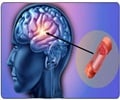In south Asians, especially Indian patients, the frequency of the COBL genetic area is higher in people with neurological disorders.
- Stroke is the second biggest cause of mortality globally, accounting for 12% of all fatalities. (Its prevalence is rising, especially in low-income nations) this can be another point – Prevalence of stroke is rising especially in low-income nations
- People from India and Pakistan who experience neurological issues have higher COBL frequency in their genomes. This can lead to the development of targeted therapies for stroke
Stroke Prevalence in Different Countries
“The population studied in this research has a fairly global representation including South Asia, which includes India and Pakistan, Africa, East Asia, Europe and Latin America,” said Prasad, the director of Rajendra Institute of Medical Sciences, Ranchi. “The combined results from different ancestries and regions made things clearer at a micro level,” he added.The team found association signals for stroke and its subtypes at 89 (61 new) distinct gene loci in 110,182 stroke patients and 1,503,898 control persons. Loci, often known as genetic street addresses, are the actual places where genes are located on chromosomes in living cells.
87% of the primary stroke risk regions and 60% of the secondary stroke risk regions were replicated during a follow-up in 89,084 additional stroke cases and 1,013,843 control people.
Potential Drug Targets for Treatment of Stroke
The study also identified additional potential targets, including the F11, KLKB1, PROC, GP1BA, LAMC2, and VCAM1 regions. Drugs are already being developed for the treatment of stroke in the F11 and PROC regions.Data from 4,088 people, including 1,609 stroke cases and 2,479 controls, from South Asia, which includes Pakistan and India, were given by Prasad and his team. They discovered that individuals from India and Pakistan who suffer from neurological problems have greater frequencies of a genomic region known as COBL. Patients of other ancestries did not have a higher frequency of this location.
“Our results provide insights to inform biology, reveal potential drug targets and derive genetic risk prediction tools across ancestries,” Prasad noted.
What is Stroke
Stroke is characterized by an abrupt neurological deficit onset. It is frequently brought on by cerebral ischemia, a common mechanism of acute brain injury brought on by reduced blood supply to the brain. The prevalence of small-vessel stroke (SVS) and intracerebral hemorrhage (ICH) is higher in Asian and African people than in European ones, demonstrating that the frequency of stroke subtypes varies by ancestral group.Source-Medindia
















